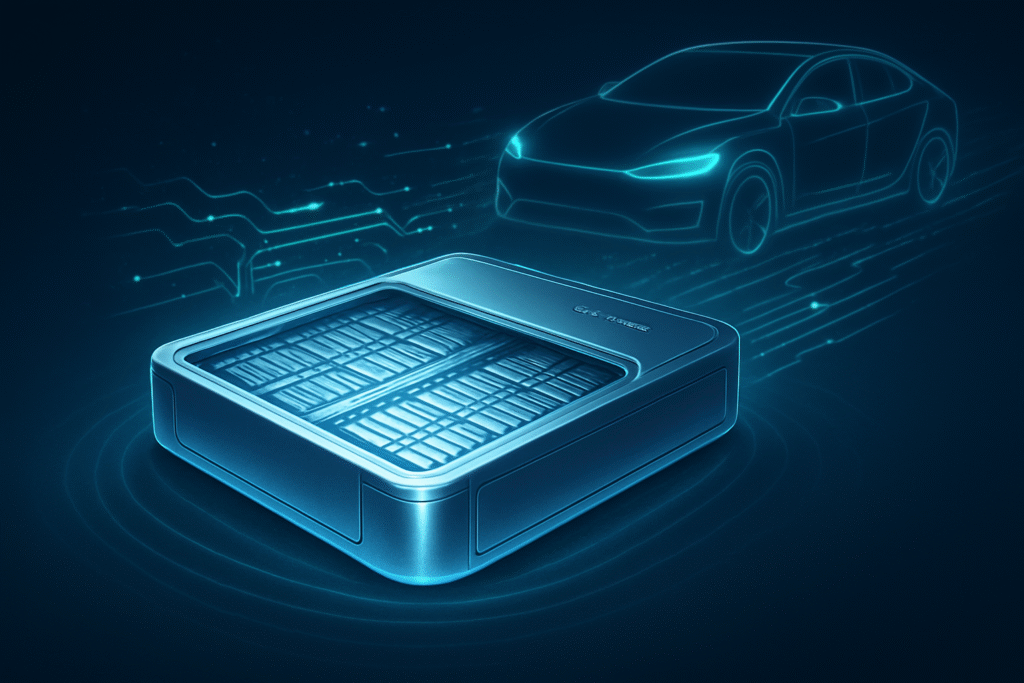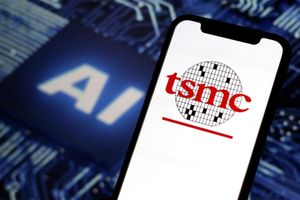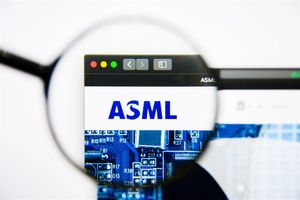
In a monumental stride forward for the electric vehicle (EV) industry, a groundbreaking new silver-ion battery technology has been unveiled today, October 17, 2025, promising to redefine the longevity and safety of EV power sources. This revolutionary development boasts an unprecedented ability to retain an astounding 96% of its original capacity after 1,300 charge cycles, a performance metric that significantly surpasses current industry standards and addresses some of the most pressing challenges facing widespread EV adoption. The immediate significance of this innovation cannot be overstated, as it paves the way for electric vehicles with vastly extended ranges, enhanced safety, and substantially longer lifespans, effectively accelerating the global transition to sustainable transportation.
This breakthrough addresses critical limitations of existing battery chemistries, particularly the notorious dendrite formation in high-energy lithium-metal batteries. By overcoming this hurdle, the silver-ion technology not only boosts battery performance but also unlocks the full potential of next-generation power cells, making EVs more practical, reliable, and appealing to a broader consumer base. The implications for manufacturers, consumers, and the environment are profound, signaling a potential paradigm shift in how electric vehicles are designed, utilized, and perceived.
The Technical Marvel Behind Extended EV Life
The core of this transformative technology lies in an ultrathin silver-ion coating, developed by researchers at Korea University's chemical and biological engineering department under the leadership of Professor Cho Jin-han. This innovative coating is specifically engineered to mitigate the long-standing issue of dendrite formation in next-generation lithium-metal batteries. Dendrites, which are microscopic, tree-like metallic structures, typically form on the negative electrode during the charging process. Their growth can lead to internal short circuits, thermal runaway, and even catastrophic failures, including fires and explosions, thereby hindering the commercialization of high-energy-density lithium-metal batteries.
The silver-ion coating acts as a protective, uniform layer that ensures lithium ions deposit evenly across the electrode surface, effectively preventing the nucleation and growth of these dangerous dendrites. This meticulous control over lithium deposition is what allows the battery to maintain an exceptional 96% of its capacity even after 1,300 full charge and discharge cycles. In comparison, conventional lithium-ion batteries typically experience more significant capacity degradation over a similar number of cycles, often dropping to 80% or less, which is generally considered the end-of-life for an EV battery. The technical specifications point to a future where EV batteries could last for the entire lifespan of a vehicle, significantly reducing waste and ownership costs.
Beyond dendrite suppression, the inherent properties of silver contribute to several other performance advantages. Silver's exceptional electrical conductivity facilitates faster charging rates and improves overall thermal management within the battery cell, leading to heightened stability. While traditional lithium-ion batteries (e.g., those using graphite anodes) offer good cycle life, they struggle to achieve the energy density required for truly long-range EVs without increasing battery size and weight. Lithium-metal batteries, with their theoretical energy density nearly doubling that of current lithium-ion cells, have long been the holy grail for EV manufacturers. This silver-ion coating provides the missing piece, enabling the safe and stable operation of these high-energy systems. Initial reactions from the battery research community have been overwhelmingly positive, with experts hailing it as a "game-changer" that could finally bring high-performance lithium-metal batteries to mass market.
Reshaping the Competitive Landscape of the EV Industry
This silver-ion battery technology is poised to profoundly impact the competitive dynamics of the electric vehicle industry, creating clear beneficiaries and potential disruptors. Companies heavily invested in the development and manufacturing of advanced battery cells, such as Panasonic Holdings Corporation (TYO: 6752), LG Energy Solution (KRX: 373220), and Contemporary Amperex Technology Co. Limited (CATL) (SZ: 300750), stand to gain immensely if they can license or integrate this technology into their production lines. The ability to offer batteries with significantly longer lifespans and superior safety could provide a substantial competitive advantage in a market increasingly focused on vehicle range and durability.
The development could also accelerate the timelines for EV startups and established automotive giants alike. For companies like Tesla, Inc. (NASDAQ: TSLA), General Motors Company (NYSE: GM), and Volkswagen AG (FWB: VOW3) that are pushing the boundaries of EV performance, access to such a robust and long-lasting battery could enable the production of vehicles with unprecedented ranges and faster charging capabilities, directly impacting consumer adoption rates. This technology could disrupt the current hierarchy of battery suppliers, potentially elevating those who can rapidly adapt and implement the silver-ion coating.
Furthermore, the increased safety and longevity could reduce warranty claims related to battery degradation, benefiting manufacturers and fostering greater consumer confidence. Companies that prioritize integrating this technology could secure a strategic advantage, allowing them to differentiate their products in a crowded market. The potential for lighter, more energy-dense batteries could also lead to innovations in vehicle design, potentially reducing overall vehicle weight and improving efficiency, further disrupting existing product offerings and market positioning.
A Broader Horizon: Impact and Implications
This silver-ion battery breakthrough fits perfectly into the broader AI and advanced materials landscape, symbolizing a critical convergence of scientific innovation and practical application. While not directly an AI development, the research and optimization processes for such advanced materials often leverage AI and machine learning for simulations, material discovery, and performance prediction. This advancement signifies a major step towards addressing global sustainability goals by making electric vehicles a more viable and attractive alternative to internal combustion engine cars.
The impacts extend beyond just the EV market. Longer-lasting, safer batteries could also revolutionize grid-scale energy storage, portable electronics, and even aerospace applications, where high energy density and reliability are paramount. The reduction in battery degradation could significantly lower the environmental footprint associated with battery manufacturing and disposal, as fewer batteries would need to be produced and recycled over a vehicle's lifetime. Potential concerns, however, might revolve around the scalability of silver-ion coating processes and the cost implications of using silver, which is a precious metal. Researchers will need to demonstrate that the benefits outweigh any potential increase in manufacturing complexity or material costs.
Comparing this to previous milestones, this silver-ion technology echoes the significance of early breakthroughs in lithium-ion chemistry, which paved the way for modern portable electronics. However, its direct impact on overcoming the dendrite challenge in lithium-metal batteries positions it as a more specific, yet equally transformative, advancement for high-energy applications. It represents a mature solution to a problem that has plagued battery scientists for decades, pushing the boundaries of what's possible in energy storage.
The Road Ahead: Future Developments and Expert Predictions
Looking ahead, the immediate near-term developments will likely focus on scaling up the production of this silver-ion coated technology and integrating it into commercial battery cells. We can expect to see partnerships between the research institution and major battery manufacturers or automotive original equipment manufacturers (OEMs) for pilot programs and further validation. The next 12-24 months will be crucial for demonstrating manufacturing feasibility and cost-effectiveness at scale.
In the long term, this technology opens doors for even more advanced battery designs. We could see the emergence of EVs with ranges exceeding 600 miles on a single charge and the capability for full charges in under 10 minutes, fundamentally changing the consumer experience. Beyond EVs, potential applications include high-performance drones, electric aircraft, and robust grid energy storage systems that require extreme longevity and safety. Challenges that need to be addressed include optimizing the coating process for mass production, ensuring the long-term stability and cost-effectiveness of silver usage, and further enhancing the energy density and power output.
Experts predict that this breakthrough will accelerate the timeline for achieving "battery parity" with gasoline vehicles, where EVs offer comparable or superior range, refueling times, and overall cost of ownership. What experts predict will happen next is a race among battery manufacturers to license and implement this technology, leading to a new generation of EV batteries that are safer, last longer, and perform better, ultimately driving mass adoption of electric vehicles globally.
A New Chapter in Battery Technology
In summary, the new silver-ion battery technology, with its unprecedented ability to retain 96% capacity after 1,300 cycles, marks a pivotal moment in the evolution of electric vehicle power. This breakthrough directly addresses critical issues of safety, longevity, and energy density that have hampered the widespread adoption of high-performance lithium-metal batteries. By effectively preventing dendrite formation, it not only extends battery life but also unlocks the potential for significantly longer EV ranges and faster charging.
This development's significance in battery history is profound, offering a viable path to overcome a major technical hurdle that has persisted for decades. It underscores the continuous innovation occurring at the intersection of materials science and energy technology, promising a future where electric vehicles are not just a sustainable choice but also a superior one in terms of performance and reliability. What to watch for in the coming weeks and months are announcements of commercial partnerships, further pilot studies, and the initial steps towards integrating this game-changing technology into production-ready EV batteries. The race to power the next generation of electric vehicles has just taken an exciting turn.
This content is intended for informational purposes only and represents analysis of current AI developments.
TokenRing AI delivers enterprise-grade solutions for multi-agent AI workflow orchestration, AI-powered development tools, and seamless remote collaboration platforms.
For more information, visit https://www.tokenring.ai/.






